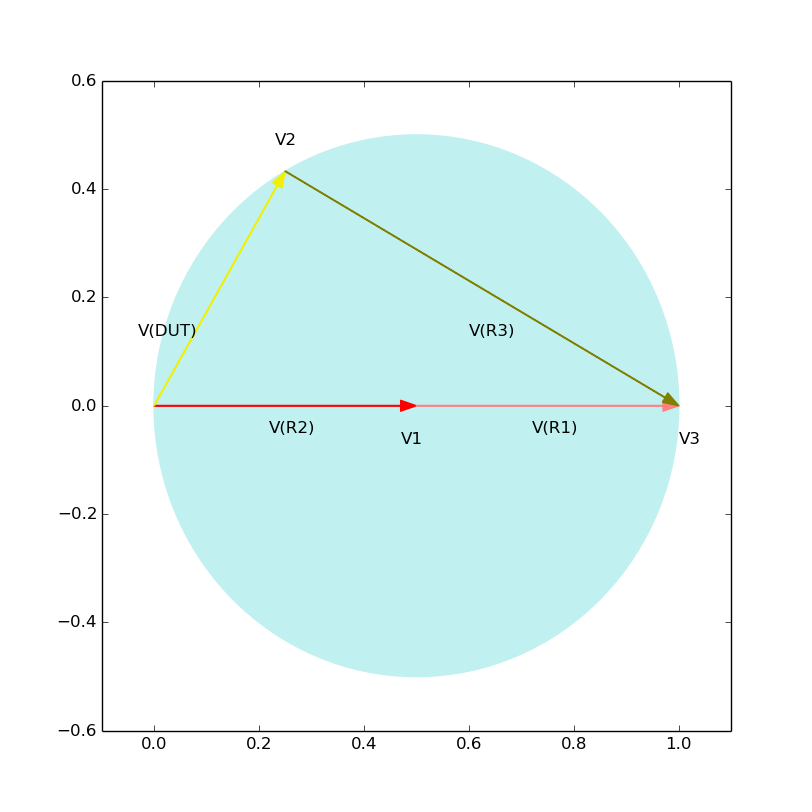If your DUT is purely reactive, which means Z(DUT)=R+jX has no resistive part, V(DUT) vector and V(R3) vector are orthogonal, and hence V2 is on the circle with its diameter being V(R2) plus V(R1) vectors.
If the DUT is inductive, V2 is on the upper half of the circle, because the V2 phase is in advance relative to V1, and if capacitive, on the lower half.
What happens if the DUT has some resistive part? You will find V2 not on the circle, but within the circle. Do you ever find V2 out of the circle? The answer is never unless you can realize negative resistance with your DUT.
All those things are obvious for you?

